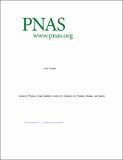Por favor, use este identificador para citar o enlazar a este item:
http://hdl.handle.net/10261/254185COMPARTIR / EXPORTAR:
 SHARE SHARE
 CORE
BASE CORE
BASE
|
|
| Visualizar otros formatos: MARC | Dublin Core | RDF | ORE | MODS | METS | DIDL | DATACITE | |

| Título: | Direct field evidence of autocatalytic iodine release from atmospheric aerosol |
Autor: | Tham, Yee Jun; He, Xu-Cheng; Li, Qinyi CSIC ORCID; Cuevas, Carlos A. CSIC ORCID; Shen, Jiali; Kalliokoski, Joni; Yan, Chao; Iyer, Siddharth; Lehmusjärvi, Tuuli; Jang, Sehyun; Thakur, Roseline, C.; Beck, Lisa; Kemppainen, Deniz; Olin, Miska; Sarnela, Nina; Mikkilä, Jyri; Hakala, Jani; Marbouti, Marjan; Yao, Lei; Li, Haiyan; Huang, Wei CSIC; Wang, Yonghong; Wimmer, Daniela; Zha, Qiaozhi; Virkanen, Juhani; Spain, T. Gerard; O'Doherty, Simon; Jokinen, Tuija; Bianchi, Federico; Petäjä, Tuukka; Worsnop, Douglas R.; Mauldin III, Roy L.; Ovadnevaite, Jurgita; Ceburnis, Darius; Maier, Norbert M.; Kulmala, Markku; O’Dowd, Colin; Dal Maso, Miikka; Saiz-Lopez, A. CSIC ORCID; Sipilä, Mikko | Fecha de publicación: | 2021 | Editor: | National Academy of Sciences (U.S.) | Citación: | Proceedings of the National Academy of Sciences of the United States of America 118(4): e2009951118 (2021) | Resumen: | Reactive iodine plays a key role in determining the oxidation capacity, or cleansing capacity, of the atmosphere in addition to being implicated in the formation of new particles in the marine boundary layer. The postulation that heterogeneous cycling of reactive iodine on aerosols may significantly influence the lifetime of ozone in the troposphere not only remains poorly understood but also heretofore has never been observed or quantified in the field. Here, we report direct ambient observations of hypoiodous acid (HOI) and heterogeneous recycling of interhalogen product species (i.e., iodine monochloride [ICl] and iodine monobromide [IBr]) in a midlatitude coastal environment. Significant levels of ICl and IBr with mean daily maxima of 4.3 and 3.0 parts per trillion by volume (1-min average), respectively, have been observed throughout the campaign. We show that the heterogeneous reaction of HOI on marine aerosol and subsequent production of iodine interhalogens are much faster than previously thought. These results indicate that the fast formation of iodine interhalogens, together with their rapid photolysis, results in more efficient recycling of atomic iodine than currently considered in models. Photolysis of the observed ICl and IBr leads to a 32% increase in the daytime average of atomic iodine production rate, thereby enhancing the average daytime iodine-catalyzed ozone loss rate by 10 to 20%. Our findings provide direct field evidence that the autocatalytic mechanism of iodine release from marine aerosol is important in the atmosphere and can have significant impacts on atmospheric oxidation capacity. | Versión del editor: | http://dx.doi.org/10.1073/pnas.2009951118 | URI: | http://hdl.handle.net/10261/254185 | DOI: | 10.1073/pnas.2009951118 | Identificadores: | doi: 10.1073/pnas.2009951118 issn: 1091-6490 |
| Aparece en las colecciones: | (IQF) Artículos |
Ficheros en este ítem:
| Fichero | Descripción | Tamaño | Formato | |
|---|---|---|---|---|
| Appendix.pdf | 4,64 MB | Adobe PDF |  Visualizar/Abrir | |
| Direct field evidence of autocatalytic.pdf | 1,63 MB | Adobe PDF |  Visualizar/Abrir |
CORE Recommender
Page view(s)
62
checked on 23-abr-2024
Download(s)
116
checked on 23-abr-2024
Google ScholarTM
Check
Altmetric
Altmetric
NOTA: Los ítems de Digital.CSIC están protegidos por copyright, con todos los derechos reservados, a menos que se indique lo contrario.
